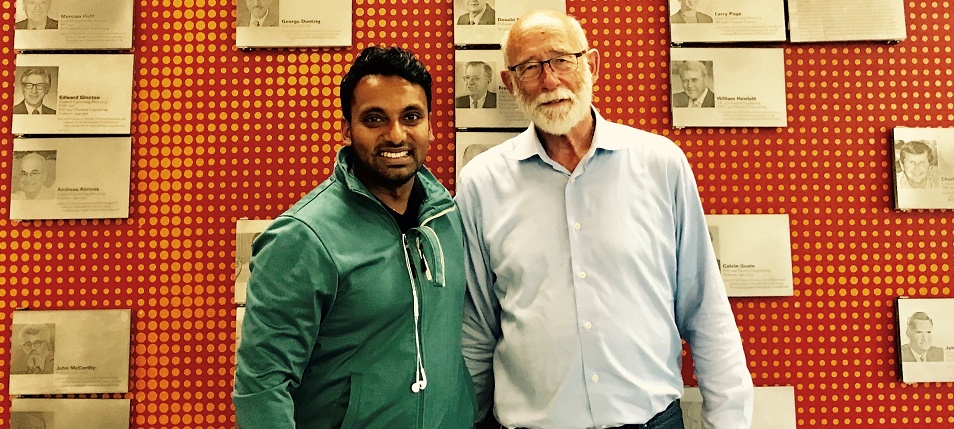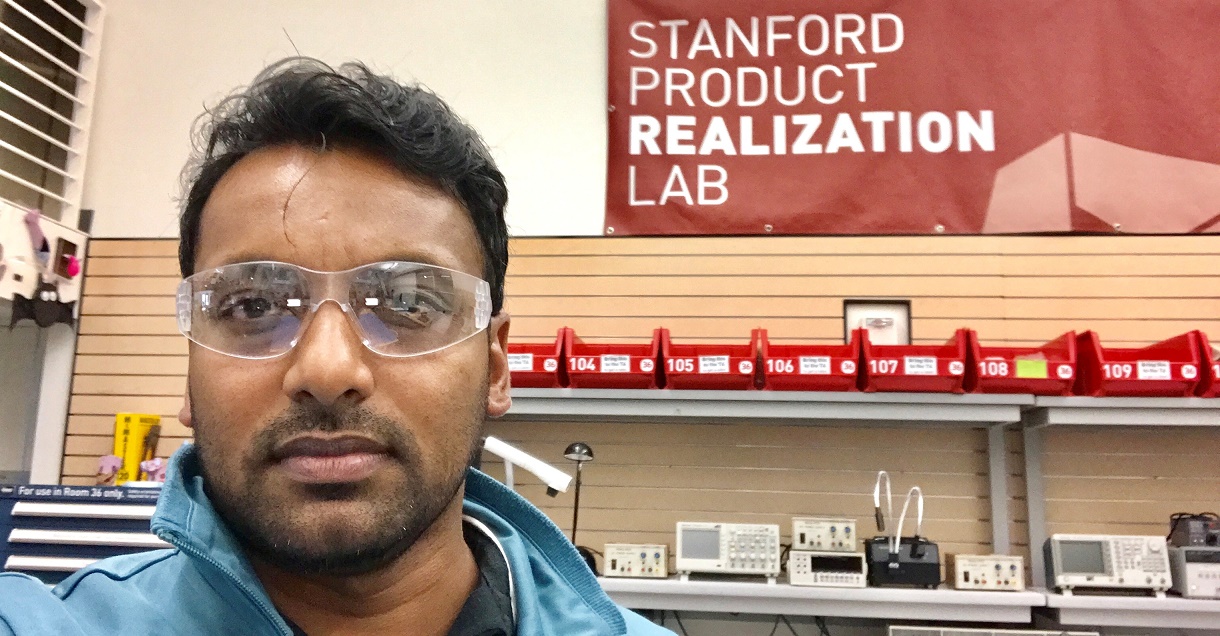
ACS Vice-President Yohan Ramasundara and Professor David Beach at Stanford University.

In 2016-17, Stanford is a $5.9 billion enterprise. It is one of the top universities in the world with more than 12,000 employees. With great academic strength, wealth, and proximity to Silicon Valley, Stanford is one of the most successful universities in creating companies and licensing its inventions to existing companies. It is often held up as a model for technology transfer.
Stanford's faculty and former faculty includes 31 Nobel laureates, as well as 19 recipients of the Turing Award, known as the ‘Nobel Prize of computer science’, comprising one third of the awards given in its 44-year history.
With such an amazing faculty staff nourishing the brightest minds, exploring the most intriguing mysteries of the universe, and addressing the most complicated challenges facing society, one could expect Stanford to be arrogant.
While being the best and having confidence to take risks to innovate, with numerous successes, Stanford has made sure its confidence does not change to arrogance – by being humble.
While visiting the University last week, I met with one of the most humble professors I’ve ever met, David Beach, Professor (Teaching) of Mechanical Engineering, who has been working at Stanford for more than 45 years.
Beach is a co-director of the Product Realization Laboratory, one of the most unique teaching projects in the world. The lab provides 1,700 students annually with hands-on experiences in product definition, conceptual design, detail design, and prototype creation.
Beach explains the operations of the lab with great passion. Most engineering students have some experience taking courses in the lab, such as Manufacturing and Design, Medical Devices Design and Computer-Aided Product Creation.
But the lab is much more than a place for students to do coursework. While many of the projects are related to students’ research, some are simply an extension of students’ hobbies.

ACS Vice-President Yohan Ramasundara at the Product Realization Laboratory
As we enter the garage where the Stanford Cart – the first computer-controlled, autonomous vehicle – was constructed, Beach continues, “Students from any major at Stanford, whether mechanical engineering, material science, computer science or even English can pursue projects at the lab. Final products range from Halloween costumes, bicycles to complex machines such as a self-driving car.”
The lab’s machines are capable of producing almost anything that could be manufactured in a real factory.
Innovative entrepreneurship
The lab has been a springboard for students interested in innovative entrepreneurship. Some students successfully get patents for projects they started in the lab. Some students collaborate with peers while working in the lab, with whom they later work to build their own enterprises based on ideas they generated.
“The emphasis on constructing actual projects, as opposed to only conceptualizing designs on a computer screen, is what makes Stanford’s Product Realization Lab so special. Engineers and designers are much more powerful if they have built things,” said Beach.
Stanford’s unofficial motto ‘Die Luft der Freiheit weht’ (translates as ‘the wind of freedom blows’) emphasises the importance of academic freedom, free expression, diversity and inclusion, together with the philosophy that Stanford graduates should not only be good citizens but also excel in a profession. “Making things” has been an important part of a Stanford engineering education. Students are not told what to do in the labs – the teachers simply help them do whatever it is they want to do.
Beach believes that creation of experience, from which students (and teams of students) can interpret and internalise their own conclusions, provides an excellent complement to content-based teaching.
His goal is to add strength in tacit knowledge – which derives from the hands-on synthesis of design, prototype building, presentation and criticism. The resulting judgment and instinct regarding materials, devices, materials transformation processes, and design process complement classical analytical engineering education to create superior engineers.
I could see how his humility, commitment, passion, drive, enthusiasm and altruistic behaviour will help students to be more innovative and go beyond the normal expectations of a student to be ‘successful’. Beach demonstrates the correlation between humility and excellence, and as Confucius said, humility is the solid foundation of all virtues.
This is why we see the successful organisations and leaders who understand real leadership reward and recognise humble staff, rather than selecting self-promotors.







